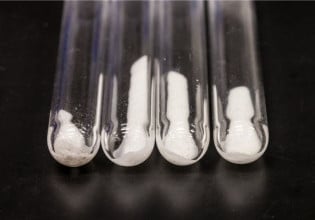NASA’s Mars Science Laboratory mission, which is scheduled to land August 5, has the potential to be the most productive Mars surface mission in history. That’s due in part to its advanced ‘hybrid’ power system. Space applications are frequently powered by a combination of energy sources – usually solar array/battery combinations. This is the first time a radioisotope thermoelectric generator (RTG), Li-ion batteries and a solar array have been used on the same power system which has to function over all three stages of the mission, cruise, descent and rover.
On July 24, twelve days prior to the scheduled landing, Curiosity’s two Li-ion rechargeable batteries were recharged to 100 percent of capacity in preparation for entry, descent and landing. The batteries, which have been maintained at a 70-percent state of charge during the cruise to Mars, are being recharged using power from Mars Science Laboratory’s cruise-stage solar array.
The batteries enable Curiosity’s power subsystem to meet peak power demands of rover activities when the demand temporarily exceeds the onboard multi-mission radioisotope thermoelectric generator (MMRTG) steady output level. These 28V batteries are rated to deliver 42 amp-hours each, and are expected to go through multiple charge-discharge cycles per Martian day.
The power system on Curiosity includes a 110-Watt RTG called the Multi-Mission Radioisotope Thermoelectric Generator (MMRTG), a state-of-the-art energy source that generates electricity from the natural decay of Plutonium-238. Once on Mars, the MMRTG and the Li-ion battery will supply all energy to the vehicle. The MMRTG can run continuously for many years. The system will supply warmth and electricity to Curiosity and its scientific instruments using heat from nuclear decay.
The generator is fueled with a ceramic form of Plutonium-dioxide encased in multiple layers of protective materials including iridium capsules and high-strength graphite blocks. As the plutonium naturally decays, it gives off heat, which is circulated through the rover by heat transfer fluid plumbed throughout the system. Electric voltage is produced by using thermocouples, which exploit the temperature difference between the heat source and the cold exterior.
NASA chose to use a nuclear power source because solar power alternatives did not meet the full range of the mission’s requirements. Only the radioisotope power system allows full-time communication with the rover during its atmospheric entry, descent and landing regardless of the landing site. And the nuclear powered rover can go farther, travel to more places, last longer, and power and heat a larger and more capable scientific payload compared to the solar power alternative NASA studied.






